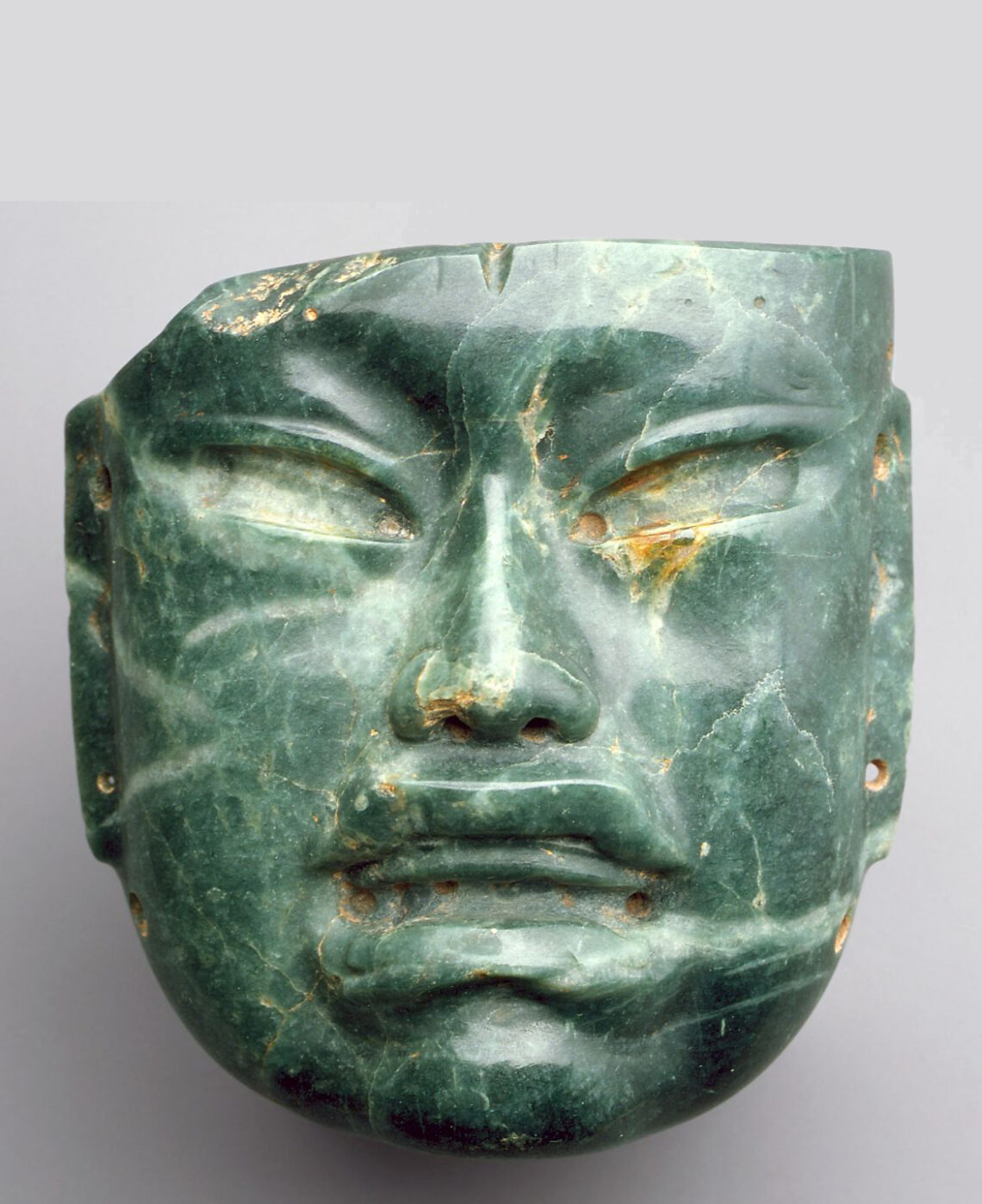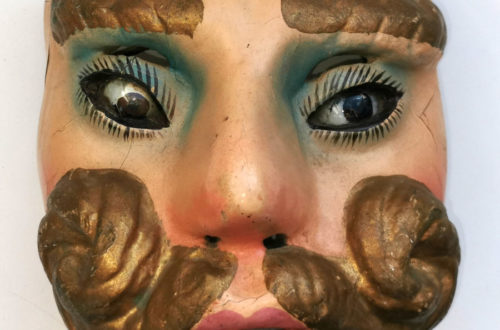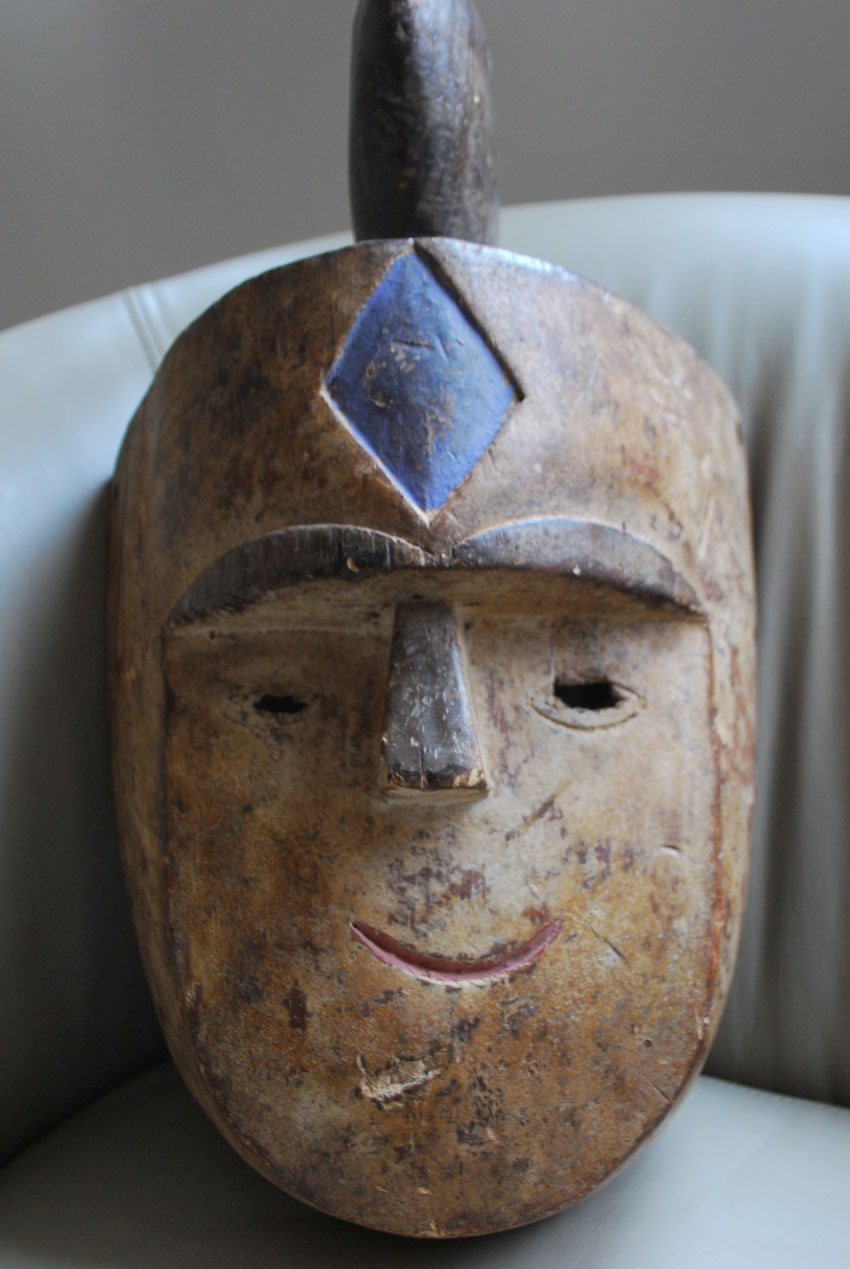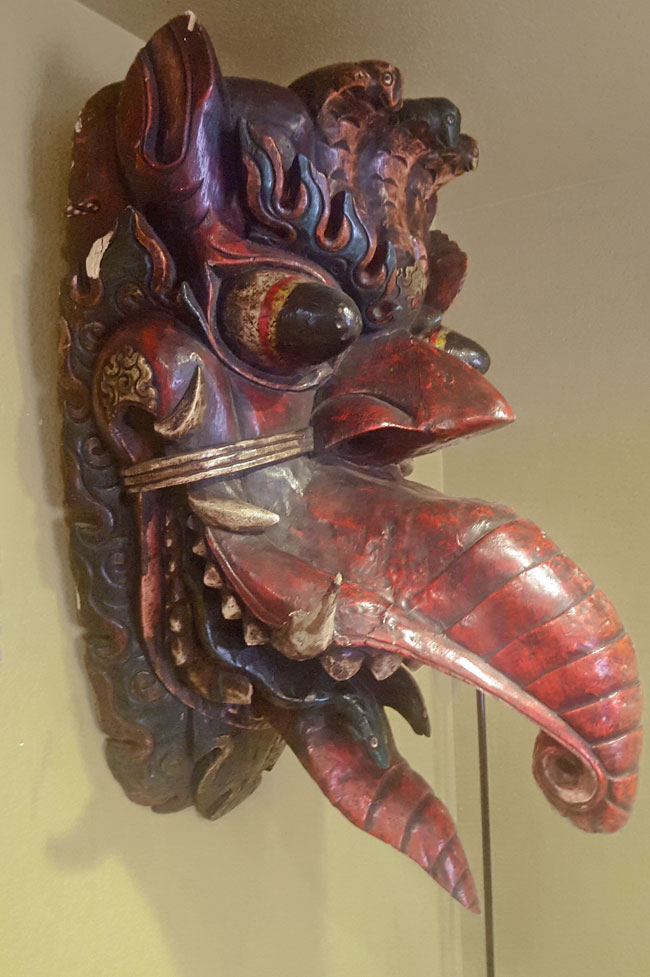The Olmec, whose heartland was located in present-day Mexico from 1200-400 B.C., excelled in creating fine greenstone sculptures. From the middle of the 11th century B.C. to the Spanish Conquest in the 16th century, green and blue colored stones were esteemed across Mesoamerica for their exceptional luster and translucency. The Olmec especially valued the bluish color of this jadeite mask. Jadeite, a rare variety of greenstone, occurs naturally in very few places around the world. 1819
Despite the concave depression, this mask was not made to be worn on the face, at least not by the living. Unlike the earlobes, which feature small holes, neither the eyes nor the mouth have been perforated for sight or breath. Holes along the edges of the mask, however, hint at its ritual usage. Masks appear in depictions of rulers or performers and are represented as belt ornaments, pectorals, or headdress components.
These stone masks are very old, rare and expensive. Here is a personal story that might amuse you. An authentic Olmec mask was being auctioned at a major gallery, but an X-Ray had revealed there was a repair inside. This is forbidden. I was willing to bid a few thousand and then pay a guy to remove just the coverup so the public could see it had been damaged. Excited about owning my first museum piece, I was way outbid and never found out what happened that caved-stone artifact. A






